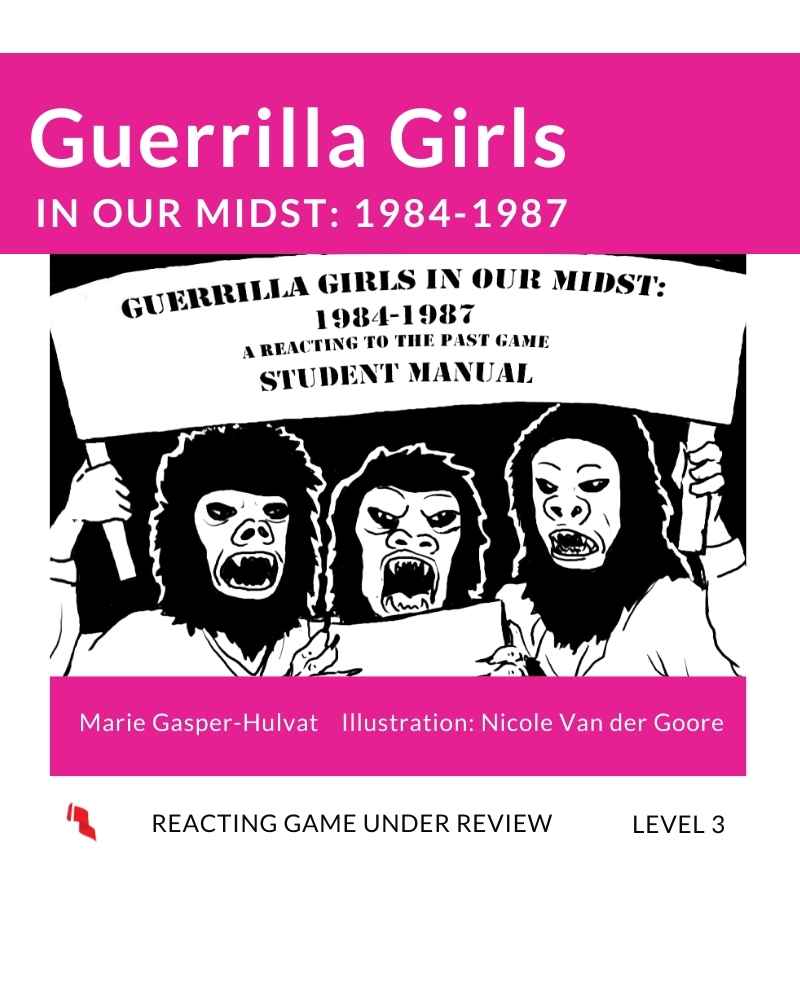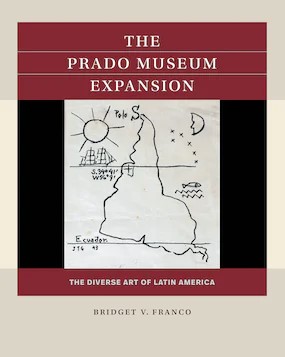 |
GUERRILLA GIRLS
Guerrilla Girls in our Midst: 1984-1987
by Marie Gasper-Hulvat
 Play this game recently? | Who (really) pulls the strings in the NYC art world? The booming 1980s New York City art scene saw the emergence of a feminist art collective known as the Guerrilla Girls who exposed contemporary art world sexism and racism. In cheeky posters plastered all over the gallery district, they employed simple statistics for the purposes of social critique. The historical context of this game lies at the intersection between 1970s feminist activism and the triumph of the New Right. Collectors flush with cash from Reaganomics deregulation seek out art in pursuit of deep meaning for their lives – or maybe just of deep profits from good investments. Primary texts include selections from Linda Nochlin, Lucy Lippard, Clement Greenberg, Phyllis Schlafly, and Ayn Rand. Major questions for debate range from whether the art world is sexist and should embrace affirmative action to whether artistic quality even matters, who gets to determine such quality, and whether one can legitimately tie quality to sincerity of expression within a postmodern world. This is a Level 3 game that is still under development but has been approved by the Reacting Editorial Board (REB) for general use. A detailed explanation of the editorial process and game levels can be found on our REB Page. |
Details
|
Using the Game
Class Size and Scalability Class Time
Assignments You can adjust the assignments to fit the desired learning outcomes of your class. This game can include traditional paper/research/thesis-driven writing, journalism, criticism, artists' statements, gallery labels, and art interpretation (gallery and curatorial statements). Not all roles are required to give formal speeches. |
Reviews |
"As a visual and social artist who teaches a great deal of art history, this game is really exciting. The characters are really engaging, and would be so fun to embody – even for students that are just getting to know these artists, critics, etc. The issue of gender is still very much at hand in the art world and beyond, and has even grown to include other minorities, which is an easy adjacent argument or investigation." | "This game can work in the art history classroom easily and effectively, as well as a class focused on history, gender studies, and cultural studies. The many components for the game keep it exciting, and allow students to mingle and develop charters well." | "This is a complex and nimble game that successfully integrates feminist history and theory with fundamental questions about the value of art in the 1980s. In entering the world of Guerrilla Girls, students will be pushed to consider the relationship between art and society and the interplay between the art market and the art itself." |
 GAME MATERIALS
GAME MATERIALS
Reacting Consortium members can download all game materials below. You will be asked to sign in before downloading.
Please Fill out the Permissions Request Form Before Using Guerrilla Girls in Your Class!
Gamebook All students need a Gamebook, which includes resources and historical content. Members can download the Gamebook, and provide it to students for free or at cost. VERSION 4.0 Updated February 2022. | Instructor's Manual The Instructor's Manual includes guidance for assigning roles, presenting historical context, assignments, activities and discussion topics, and more. | Role Sheets and Handouts (Prestige Points Cards) Students also need a Role Sheet, which contains biographical information, suggestions for further reading, and role-specific info or assignments. |
Marie Gasper-Hulvat
Marie Gasper-Hulvat is an Assistant Professor at Kent State University-Stark. She studies active learning practices within Art History pedagogy in tandem with research on Soviet / Russian culture, specifically early Stalinist art, visual culture, and exhibition practices. | Reacting and Related Titles
|
Members can contact game authors directly if they have questions about using the game. We also invite instructors join our Facebook Faculty Lounge, where you'll find a wonderful community eager to help and answer questions.
|
|
|


